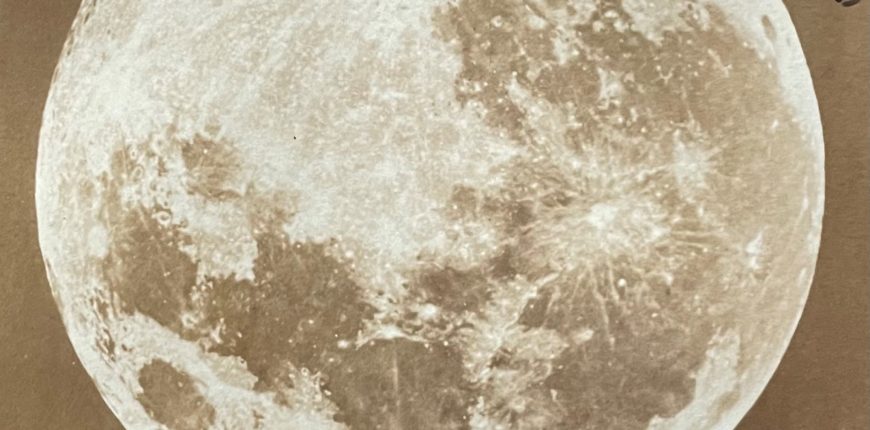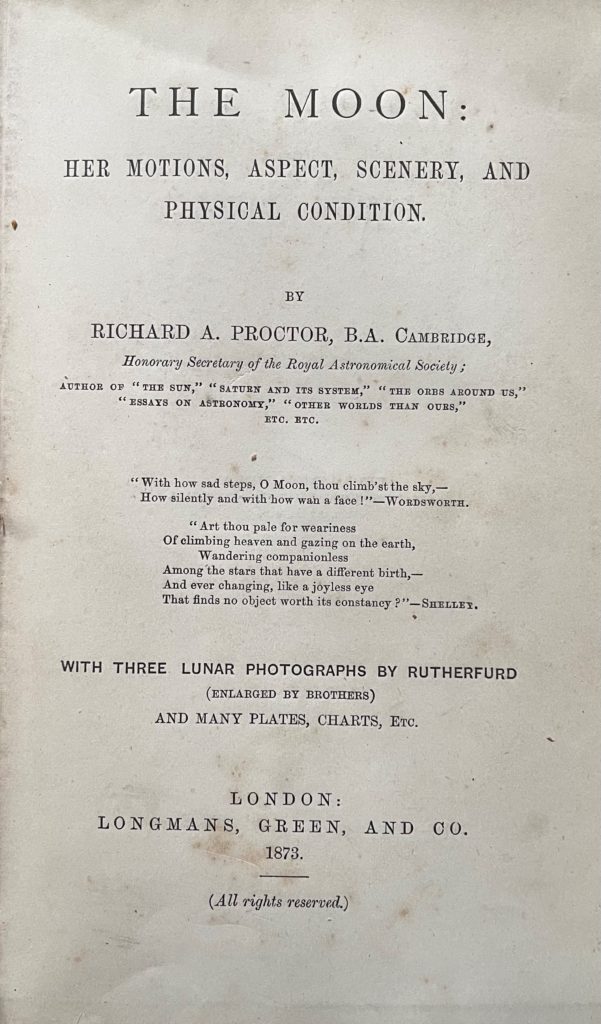Richard A. Proctor’s study of the moon
Beth Howell, our Saturday Events Coordinator, has been exploring the Institution's science collection for inspiration for astronomical making activities for our youngest members. Richard A. Proctor (1837-1888) was a lawyer turned astronomer who wrote a series of works on the planets. His investigation of the moon is illustrated with incredible photographs by Lewis Morris Rutherfurd (1816-1892) who also ditched law to study the heavens.

Astronomy and space sciences have a much longer history than we might think. When the Devon and Exeter Institution was founded in 1813, its members were interested in a wide variety of subjects and the Institution sought to assemble a collection to match these various interests. Not only did the Institution’s members gather contemporary texts, but they also invested in volumes reflecting the discoveries of important thinkers from across the centuries.
In the early 19th century, the pursuit of science was largely known as Natural Philosophy, and it was only later that it was separated into disciplines such as Biology, Chemistry, and Physics. In this early experimental phase – a creative time of intellectual exchange and scientific speculation – some experiments were even carried out at the Devon and Exeter Institution.

Eventually, the separation of the sciences encouraged new professional bodies, such as the Royal Astronomical Society founded by John Herschel (1792-1871) in 1820 to encourage and promote the study of the planets and the stars. By the Victorian era, new and more powerful telescopes had encouraged certain space-minded individuals to look skywards with more intent. The Institution’s heritage collection contains several volumes on astronomy, including two beautifully illustrated volumes by Richard A. Proctor (1837-1888), an English astronomer, elected to the Royal Astronomical Society in 1866 and its Honorary Secretary from 1872. Proctor produced one of the earliest maps of Mars and has a martian crater named after him.
Proctor’s 1873 work on The Moon: her motions, aspect, scenery, and physical condition includes stunning lunar photographs by Lewis Morris Rutherfurd (1816-1892), an American astro-photographer. He, too, became an associate of the Royal Astronomical Society and has a lunar crater named after him. In his work on the moon, Proctor reflected:
Of lunarian phenomena, – that is, of the appearance presented by lunar landscapes, I shall say little, because, in point of fact, we know far too little respecting the real details of lunar scenery to form any satisfactory opinion on the subject. If a landscape-painter were invited to draw a picture presenting his conceptions of the scenery of a region which he had only viewed from a distance of a hundred miles, he would be under no greater difficulties than the astronomer who undertakes to draw a lunar landscape, as it would actually appear to any one placed on the surface of the moon.
For Proctor, and the other 19th-century astronomers of his day, the moon was still a distant and mysterious place, viewed only by telescope. Now we have better instruments to map the moon, and as part of the Apollo Program, carried out between 1969 and 1972, twelve people have walked on the moon to date. Who knows where we might next explore if we invest in new discoveries?

Whilst the moon may seem even farther off to us under the current circumstances, it is a somewhat reassuring object, which we can view, as a constant, in the sky at night. Percy Bysshe Shelley wrote the following verse ‘To the Moon’:
Art thou pale for weariness
Of climbing heaven and gazing on the earth,
Wandering companionless
Among the stars that have a different birth, —
And ever changing, like a joyless eye
That finds no object worth its constancy?
Beth Howell, Saturday Events Coordinator


